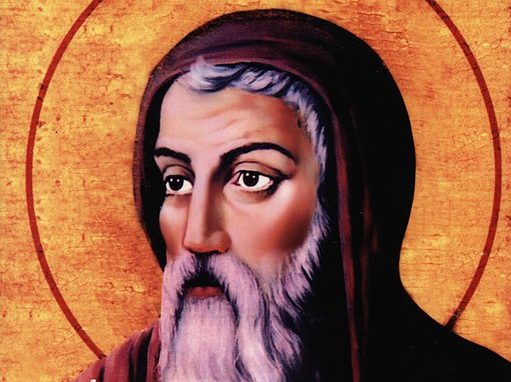St. Athanasius was born to Christian parents in 296 in Alexandria, Egypt. His parents made sure he received a full education, and a local priest, later made St. Alexander of Alexandria, noted the boy’s talents. He tutored Athanasius in theology and eventually made him an assistant.
Around age 19, Athanasius spent time in the Egyptian desert as a disciple of St. Anthony in his monastic community. When he returned to Alexandria, he was ordained a deacon in 319, and resumed his assistance to Alexander, now a bishop.
At this time, the Church was facing the threat of heresy spread by a priest named Arius. Arius taught that Jesus could not have existed eternally as God, prior to becoming man. He held that Jesus could only be considered “divine” by analogy, and his “divinity” meant only that he was God’s greatest creation.
Arius’ opponents brought forth many scripture passages to discredit him and prove Jesus’ identity as God, but for many Greek-speaking Christians, it was intellectually easier to believe in a created demi-god than to understand the mystery of the Father-Son relationship within the Godhead. The controversy divided the Church.
In 325, Athanasius attended the Council of Nicea, held to judge Arius’ doctrine in light of apostolic tradition. The Council reaffirmed the Church’s traditional teachings and established the Nicene Creed as an authoritative statement of faith. Throughout the rest of his life, Athanasius struggled to uphold the council’s teachings.
When Alexander was nearing the end of his life, he insisted Athanasius succeed him as bishop of Alexandria. Athanasius took the position as Emperor Constantine decided to relax his condemnation of Arius. He urged Athanasius to admit Arius to communion, although Athanasius consistently refused.
Over several decades, Arius and his followers tried to manipulate bishops, emperors and popes against Athanasius, mainly through false accusations. They accused him of theft, murder, assault, and even causing a famine.
Arius died in 336, but his heresy lived on. Under the rule of the three emperors after Constantine, Athanasius was forced into exile at least five times. He received support from several popes, and spent a portion of his exile in Rome.
In 369, Athanasius managed to convene an assembly of 90 bishops in Alexandria, to warn the Church in Africa against Arianism. He died in 373, and was vindicated by a comprehensive rejection of Arianism at the Second Ecumenical Council in Constantinople in 381.
At that Council, St. Gregory Nazianzen described St. Athanasius as “the true pillar of the church,” whose “life and conduct were the rule of bishops, and his doctrine the rule of the orthodox faith.”

